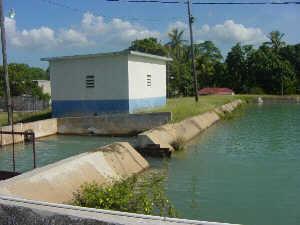Protecting Drinking Water Quality through Promotion of Water Safety Plans
Water Safety Plans (WSP) were introduced by the World Health Organization (WHO) in the 3rd edition of the Guidelines for Drinking Water Quality (2004), Exit as a health-based, risk assessment approach to managing drinking water quality that:
- Identifies and prioritizes potential threats to water quality at each step in the water supply chain for a specific drinking water system; and,
- Implements best practices to mitigate those threats and ensure drinking water quality.
EPA began promoting Water Safety Plans (WSPs) to help partner countries improve drinking water quality in Latin America and the Caribbean, Asia and, more recently, Africa.
Initial Efforts: Latin America and Caribbean
EPA’s WSP efforts began in Latin American and the Caribbean. In response to the devastation from Hurricane Mitch (October 1998), the US Environmental Protection Agency (EPA) began work addressing drinking water issues in Central America. The hurricane had caused severe damage to the region. The four components of EPA’s Hurricane Mitch activities were:
- laboratory capacity building;
- drinking water treatment plant optimization;
- source water protection; and
- safe drinking water program development.

An initial demonstration WSP was piloted in Spanish Town, Jamaica in 2006, in partnership with the US Centers for Disease Control (CDC) and the Pan American Health Organization (PAHO). Subsequently, other nations in Latin America and Central America including Brazil, Bolivia, Honduras, Costa Rica and Guyana all began developing WSPs, either on their own or with support from PAHO, CDC, and EPA.
Subsequent WSPs supported by EPA took place in India and in Africa through a partnership with the International Water Association (IWA) Exit, the World Health Organization (WHO) Exit, United Nations-Habitat Exitand other urban water utilities in East Africa.
East Africa Water Safety Plan Program
Poor sanitation, unsafe water and unhygienic environments are a leading cause of illness and death among children in Sub-Saharan Africa. EPA worked to improve public health through increasing the capacity of urban providers in Sub-Saharan Africa to deliver safe drinking water in a sustainable way from watershed to tap, through the development and implementation of Water Safety Plans (WSPs).
The goal of the East Africa Water Safety Plan program was to establish a sound basis for scaling-up WSP implementation across the Africa region by creating long-term supporting mechanisms to ensure that a significant proportion of urban populations in the African continent are consistently supplied with safe drinking water. Project elements included:
- Water Safety Plan Training. Working with the Network for Water and Sanitation (NETWAS), a training institute in Nairobi, over 200 staff from Water Utilities were trained in Water Safety Plan development. Based on the NETWAS training, a global water safety training plan package was launched in 2012.
- Water Operator Partnerships (WOPs). Three WOPs were formed to guide utilities in the development of WSPs. Each 18-month WOP targeted 2-3 utilities. Seven of the eight utilities created a WSP.
- The Africa Water Safety Plan (WSP) Network. The Africa WSP Network was launched in November 2012. The mission of the network is to achieve reliable, consistent and equitable supplies of safe drinking water in Africa by promoting the implementation of Water Safety Plans through information dissemination, knowledge sharing and support for capacity building. Members include EPA, IWA, WHO, UN-HABITAT, Aquaya, the African Water Association, GIZ, and Cap-NET (UNDP). This network builds on the previously established Latin America and Caribbean WSP Network and the Asia Pacific WSP Network affiliated with the World Health Organization and IWA.
- An online Water Safety Portal for Africa was developed with case studies and tools.
WHO currently supports WSPs in the region.
Useful Links
- Case studies and related documents can be found on the Water Safety Portal hosted by WHO and the International Water Association.
- Water Safety Plan Manual with instructions on how to develop a water safety plan.
- Water Safety Plan Network for Latin America and the Caribbean (WSP LAC/NET)
